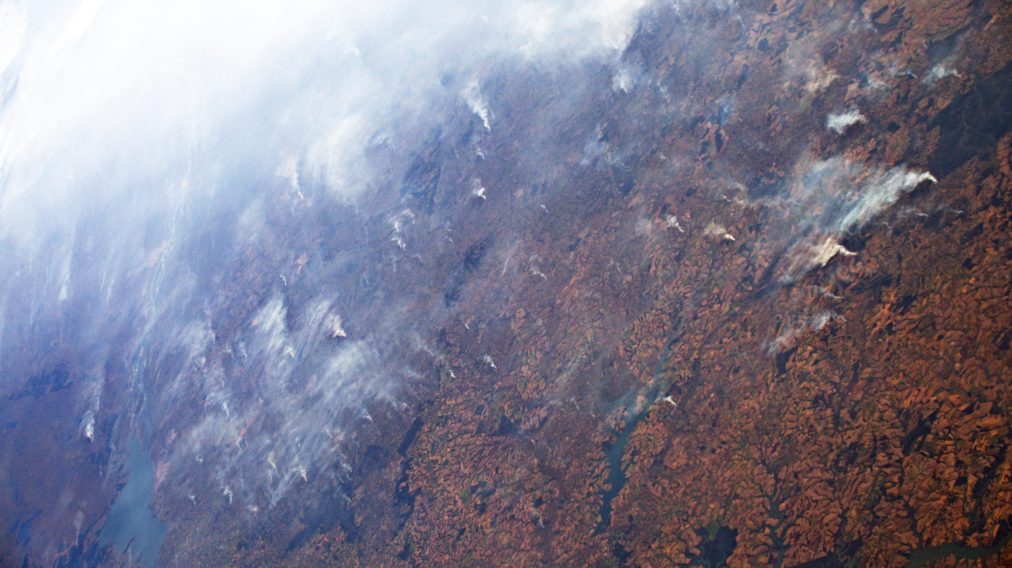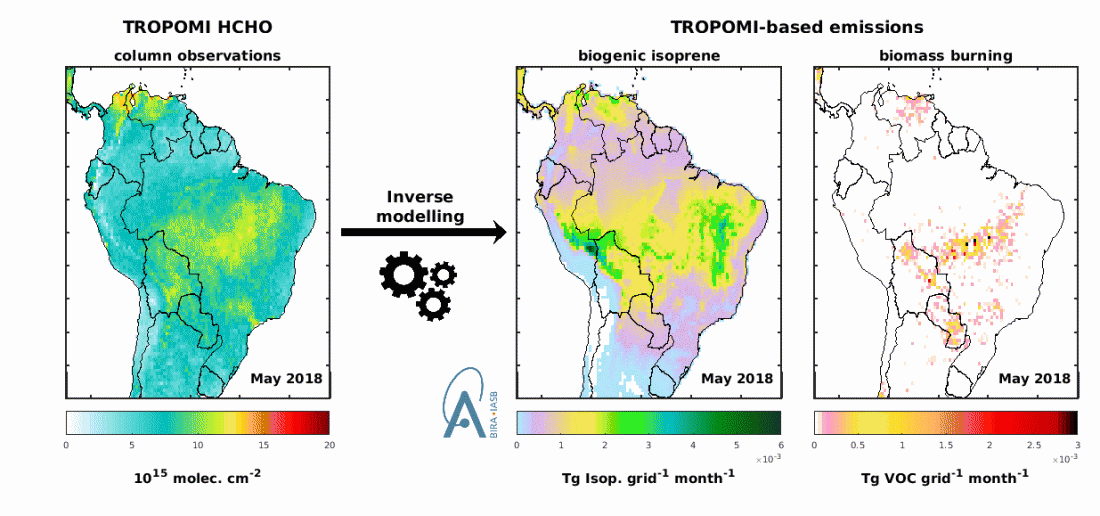South America is a rapidly developing continent of planetary importance.
It hosts the Amazon forest, which is the single largest source of biogenic volatile organic compound (BVOC) emissions into the global atmosphere; it is also a region where extremely violent and extensive wildfires are known to cause widespread damages and fatalities. In addition, the degradation of air quality has become an acute concern in sprawling South American metropolitan centers. However, the emissions of pollutants over South America are still very poorly known.
The SOLFEO (Spaceborne Observations over Latin America For Emissions Optimization applications) project, funded by ESA, addresses the urgent need for improved emission estimates over this region.
Thanks to the TROPOMI instrument onboard the Sentinel-5p satellite, chemical observations of key trace gases such as nitrogen oxides (NO2) and formaldehyde (HCHO) are now retrieved at an unprecedented spatial resolution and signal-to-noise ratio. “When combined with atmospheric models and inverse modelling methods, these observations allow to infer high-quality space-based estimates of pollutants emissions“, says Ronald van der A, coordinator of the project at the Royal Dutch Meteorological Institute (KNMI).
Within SOLFEO, we used TROPOMI HCHO observations from 2018 to generate the first TROPOMI-based VOCs emission estimates for South America. The TROPOMI-based isoprene and biomass burning emissions show a strong monthly variability (see animation below). “The satellite data suggest substantial changes in the spatial patterns of the emissions. The analysis of the TROPOMI-based emissions will help to monitor the impact of land use changes over South America, identify potential trends, and quantify the extent of environmental pressures“, says Jenny Stavrakou, in charge of the satellite-based emissions at the Royal Belgian Institute for Space Aeronomy (BIRA-IASB).
In addition, NOx emissions on a resolution of about 10×10 km are derived from TROPOMI observations using the DECSO algorithm. In the figure below results are shown for the NOx emissions over part of South America. Large emissions spots are visible at the big cities of Rio de Janeiro, Sao Paulo, and Buenos Aires caused by the traffic and industry in these regions. “Striking is the large emission source of NOx appearing over the ocean, which is not present in the existing emission inventories“, says Ronald van der A. After further research this seemed to be collocated with oil drilling activities at the vast Brazilian offshore oil fields, among the largest in the Western hemisphere.

Featured image : Burning Amazon rainforest seen from the International Space Station. © ESA/NASA – L.Parmitano


